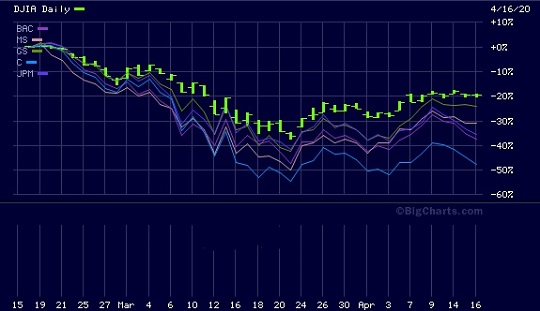Keeping a trading journal is often overlooked by many investors, but it can be a powerful tool for improving your investing skills and achieving long-term success. In this article, we will explore the benefits of documenting your trades and experiences, as well as introduce trading journal websites that can enhance your trading journey.
How keeping a trading journal can improve your investing skills
A trading journal is like a personal diary that allows you to reflect on your investment decisions and learn from past experiences. By recording each trade you make, you gain valuable insights into your strengths and weaknesses as an investor.
It helps you identify patterns in your decision-making process, enabling you to fine-tune strategies and avoid repeating costly mistakes.
In addition, a trading journal serves as a reference tool to track the performance of investments over time and understand market trends. Consistent and thorough entries are essential for maximum benefit, including details such as entry/exit points, research conducted, and emotions influencing decisions.
Overall, keeping a trading journal provides numerous advantages for investors seeking to enhance their skills. Embrace its power to continuously grow and improve in your investing endeavors.
The Benefits of Documenting Your Trades and Experiences
Keeping a detailed record of your trades and experiences in the financial markets offers numerous advantages. Beyond noting buy and sell prices, documenting your trades involves capturing crucial details such as market analysis, entry/exit strategies, and emotional factors.
This comprehensive reference guide provides valuable insights for future trades, helping you learn from past experiences and make more informed decisions. Maintaining a trading journal fosters discipline, encourages systematic thinking, and allows for collaboration within trading communities.
By investing time in documenting your trades, you lay the foundation for long-term success in the market.
Developing a Trade Plan for Strategies, Goals, and Risk Management
A well-defined trade plan acts as a roadmap for investors. It outlines specific strategies to employ based on market conditions or asset classes under consideration. Additionally, it sets realistic goals for profitability while incorporating risk management techniques such as stop-loss orders or position sizing.
By having a comprehensive trade plan in place, investors can make informed decisions and optimize their chances of success.
Incorporating Trade Planning into Your Trading Journal
Integrating trade planning into your trading journal is crucial for better decision-making. By doing so, you establish consistency in executing your strategies and ensure adherence to your trade plan.
Your journal becomes a central repository for reviewing and analyzing how well you followed your plan, identifying areas for improvement, and maintaining discipline in your investing approach.
Tracking risk management techniques in your journal is vital for preserving capital and minimizing losses. It allows you to analyze these strategies over time, enhancing your overall investment process. By incorporating trade planning into your trading journal, you can elevate your trading game and increase the likelihood of long-term success.
Implementing Effective Risk Management Techniques in Your Trading
Implementing effective risk management techniques is crucial for successful trading. It involves understanding and mitigating the potential downside of each trade.
By setting stop-loss orders, diversifying your portfolio, and allocating a specific percentage of capital to each trade, you can protect yourself from excessive losses during unfavorable market conditions. These techniques provide structure and control, allowing you to make informed decisions and increase your chances of long-term profitability.
| Risk Management Techniques | Benefits |
|---|---|
| Setting stop-loss orders | Limits potential losses |
| Diversifying your portfolio | Reduces overall risk exposure |
| Allocating specific percentage | Maintains control over portfolio exposure |
Using the Trading Journal to Track and Analyze Your Money Management Strategies
A trading journal is a crucial tool for tracking and analyzing your money management strategies. By documenting each trade’s outcome, you can assess if you’re sticking to predetermined risk levels. Analyzing this data helps fine-tune your approach and make informed adjustments to protect your capital.
Trading journal websites offer online platforms designed for investors to document their trades. These platforms provide features that enhance the trading journal experience, such as customizable templates and analytical tools for performance metrics.
In summary, a trading journal is essential for understanding trading patterns, identifying areas for improvement, and making informed adjustments to protect capital. Trading journal websites further streamline this process with additional features.
What are Trading Journal Websites?
Trading journal websites are online platforms that allow investors to keep track of their trades electronically. They provide tools for recording trade details, analyzing performance metrics, and organizing information in a user-friendly manner.
These websites streamline the process of maintaining a trading journal while offering additional benefits not available through traditional manual methods.
Enhancing Your Trading Experience with Trading Journal Websites
Trading journal websites offer advanced features that surpass traditional pen-and-paper journals. With customizable templates, performance analytics, graphical representations of data, and integration with financial tools, these platforms enhance the way traders organize, analyze, and gain insights from their trading data.
Organizational benefits include categorizing trades and recording important information systematically. Performance analytics tools calculate key metrics like win rate and risk-reward ratio. Visual representations of data assist in identifying patterns visually.
Integration with brokerage accounts or charting software simplifies importing trade data accurately. Real-time synchronization ensures up-to-date records for analysis.
Note-taking functionality encourages self-reflection and learning, helping traders refine their skills and become more disciplined in their approach.
[lyte id=’qefG3V0qfck’]







